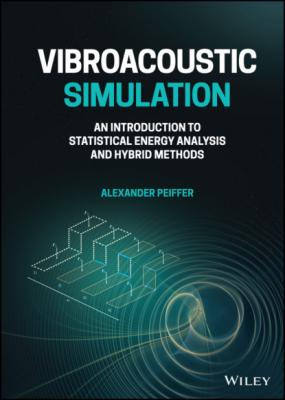Vibroacoustic Simulation. Alexander Peiffer
Чтение книги онлайн.
Читать онлайн книгу Vibroacoustic Simulation - Alexander Peiffer страница 38
 EndFraction"/> (2.63)
EndFraction"/> (2.63)
The wave equation for the velocity potential (2.30) becomes
The two right terms can be written in a different form using rΦ as argument
Equation (2.30) is the one-dimensional wave equation for the argument rΦ, so we can use the D’Alambert solution
Figure 2.5 Breathing sphere as source model for a monopole. Source: Alexander Peiffer.
The first term represents an outgoing wave travelling away from the source, the second an incoming wave travelling to the source. As we are interested in sound being emitted from the source we consider the outgoing harmonic solution with complex amplitude A
Consider a pulsating sphere of radius R in the centre with normal surface velocity vR. With the velocity potential the radial velocity can be easily derived from the solution (2.67):
Substituting Equation (2.67) into (2.68) and solving for A gives
Hence,
The strength Q(t) of the source is defined by the volume flow rate. This is the surface of the sphere times normal velocity vR
With the harmonic source strength
the spherical wave solution is
Using equations (2.25) and (2.35) pressure and velocity are given by
and
2.4.1.1 Field Properties of Spherical Waves
The acoustic impedance z is according to Equation (2.38)
In contrast to the plane wave, the specific acoustic impedance is not real. It contains a resistive and a reactive part. When the resistive part is dominant the pressure is in phase with the velocity. When the reactive part dominates, the velocity is out of phase to the pressure. The out of phase component does not generate any power in the sound field as it was the case for moving a mass or driving a spring. The motion is partly introduced into the local kinetic energy, and this part can be recovered as it is the case for an oscillating mass.